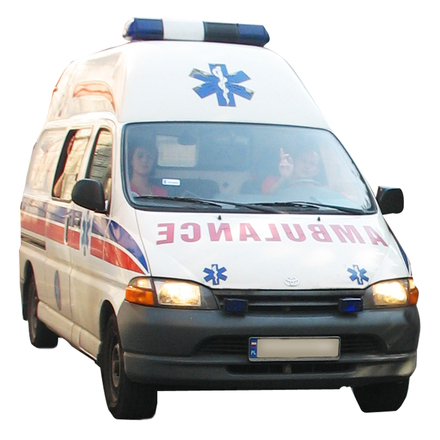
Contrary to what most people might think, critically ill patients actually do better when transported in the more basic ambulances staffed by emergency medical technicians, instead of advanced life-support vehicles that have paramedics equipped to perform more invasive procedures.
"It's counterintuitive," said Prachi Sanghavi, a visiting research fellow in health-care policy at Harvard Medical School and principal author of the study. "We have a tendency to believe that things labeled 'advanced' must do better."
The results were published in Annals of Internal Medicine.
Research has shown that crews on advanced ambulances take longer to perform those invasive procedures, in part because they don't have as much practice as clinicians in hospitals, Sanghavi said. Such procedures include the use of advanced defibrillators to shock the heart, the administration of intravenous fluids and drugs and, perhaps most risky in the field, the insertion of a tube in the airway to help with breathing.
"That's a fairly complex procedure and a common mistake is to put the tube down the esophagus, not the trachea," she said.
By comparison, crews on basic life-support ambulance use more rudimentary techniques; their focus is getting patients to the hospital quickly. For someone in respiratory distress, for example, they would use a bag-mask respirator that is put over the individual's face.
"The amount of time to deliver the advanced interventions just isn't worth it," Sanghavi said.
Yet some emergency medicine physicians dispute that conclusion.
"Their premise is flawed," said Howard Mell, a spokesman for the American College of Emergency Physicians and director of emergency services in Iredell County, N.C. He said advanced ambulances tend to carry much sicker patients. "That's why they have much worse outcomes."
Sanghavi and a team of Harvard researchers analyzed survival differences for nearly 400,000 emergency patients from a random sample of Medicare beneficiaries between 2006 and 2011. Among their findings:
• Patients with heart attacks were 5.9 percentage points more likely to survive for 90 days after their ambulance ride if they were transported in a basic ambulance rather than an advanced one.
• Stroke patients had a 4.3 percentage point greater chance of surviving for 90 days if they'd been taken in a basic ambulance.
• Patients with critical major trauma who arrived at the hospital in a basic ambulance had a 12.5 percentage point greater chance of surviving after 90 days.
In most medical emergencies, advanced ambulances are the ones that are dispatched. They account for 65 percent of emergency medical care among Medicare beneficiaries.


 Contact The Editor
Contact The Editor
 Articles By This Author
Articles By This Author
